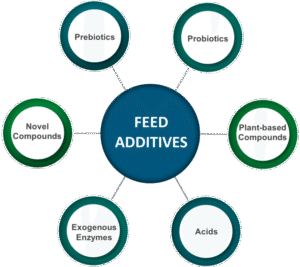Nutritional needs vary depending on the needs of the animal for health and the life stages of maintenance, conception and gestation, lactation, and growth and de- development. When a female is in the gestational period, for example, nutritional needs are different than during lactation. Figure 3.1 demonstrates how the nutrient re- requirements of a mature female vary through different life stages. Simple maintenance has the lowest level of nutritional requirements, and they must be met before other nutrients needs are considered. At this level, nutrients are used to maintain vital life processes and nor- mal body temperature, with no weight gain or loss and no production (such as reproduction or fattening). The amount of feed needed to maintain an animal depends on the size of its body.
Thank you for reading. Don't forget to subscribe & share!
The main concern during conception and gestation is meeting additional nutritional needs to ensure good fetal growth and maintain the health of the mother. Most of
Table 3.2 – Macro- and Microminerals
Macrominerals Microminerals
Calcium (Ca) Phosphorus (P) Sodium (Na) Potassium (K) Chlorine (Cl) Magnesium (Mg) Sulfur (S) Iron (Fe) Iodine (I) Copper (Cu) Cobalt (Co) Fluorine (Fl)
Manganese (Mn) Zinc (Zn) Molybdenum (Mo) Selenium (Se)
Chromium (Cr) the growing done by the fetus is done in the last trimester. During this time the female needs additional nutrients for herself and the fetus. The amount needed is equal to the nutrient needs of the young animal after birth and the maintenance needs of the female.
Lactation is milk production. Many additional nutrients are needed to produce milk, including proteins, minerals, vitamins, fats, and carbohydrates. Protein is important, since milk contains three percent protein. The energy supplied by fats and carbohydrates is vital for lactation. Water is also needed.Two minerals needed during lacta- tion are calcium and phosphorus. Vitamin A and the B- complex vitamins are necessary as well when a female is lactating. If the animal is indoors, vitamin D may be needed.
An animal also has special nutrient requirements for growth and development. As it grows, the animal in- creases the number of cells at the tissue level. Muscles are built, and bone and connective tissues are produced. To accomplish this task, an increased amount of protein is needed.The minerals calcium and phosphorus are also required for bone growth. In addition, higher quantities of vitamins are required, especially vitamin D. An energy source is supplied by including more fats and carbohy- drates in the animal’s diet. If these nutrient requirements are not met while the animal is growing, the adult will be less productive.
Nutrients are important in maintaining the health or well-being of the animal in all of the life stages. Nutri- ents are needed to carry out vital bodily functions. An animal in the maintenance stage may not be gaining or losing weight, but it may not be as healthy as it could be.
Summary
Nutrients are elements and chemical compounds that nourish the body. The six basic nutrients are water, pro- teins, carbohydrates, fats, vitamins, and minerals. Each nu- trient meets a specific need for maintenance, conception and gestation, lactation, growth and development, and health.









